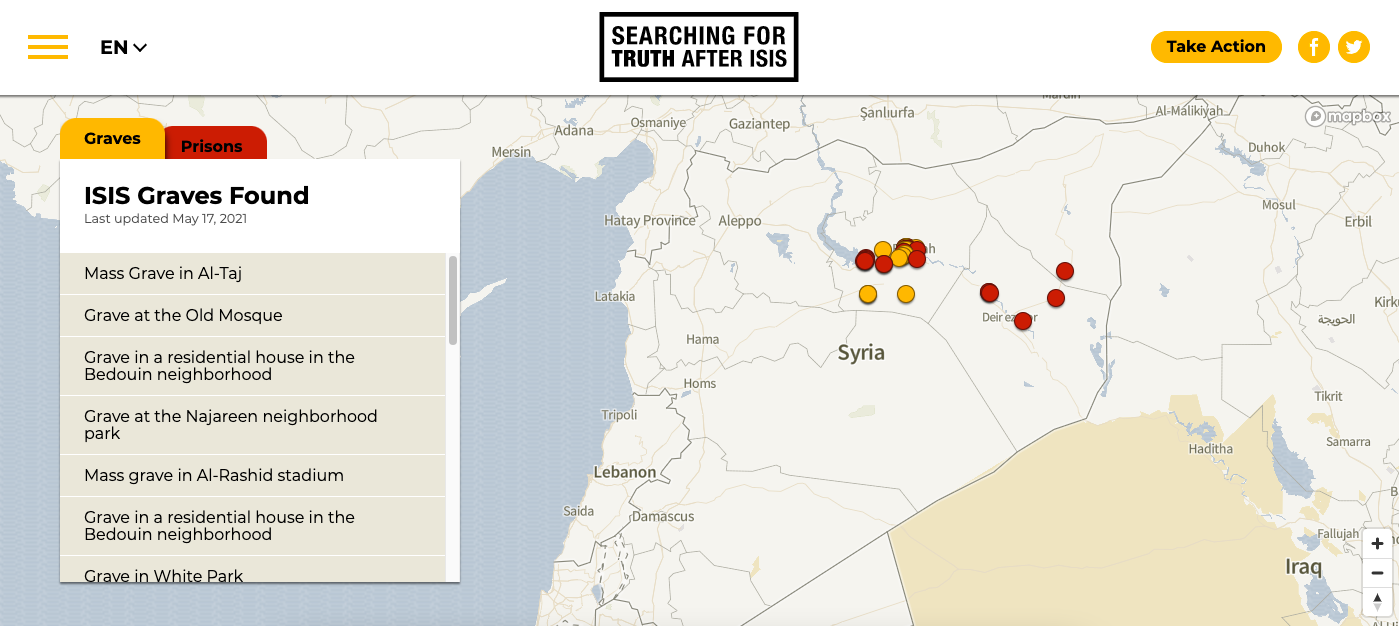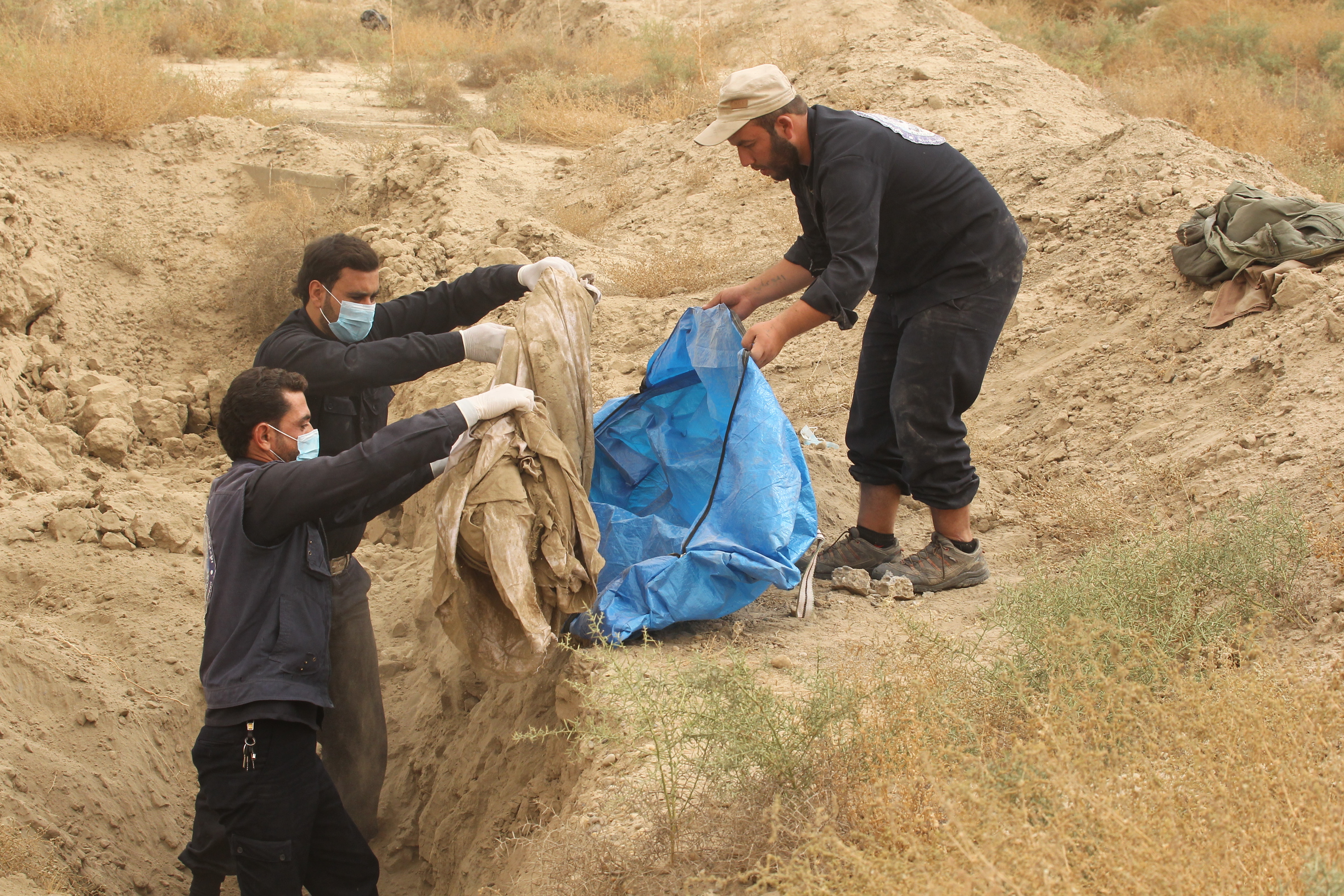A new interactive map showing details of 43 former ISIS prison locations and 24 ISIS mass graves in northeast Syria has been published today. The sheer number of sites shows the huge international effort needed to search for the whereabouts of the people kidnapped by ISIS. The work to document new sites is unfinished and ongoing, and new discoveries will be added to the map over the coming months.

Click to explore the map
Families searching for their missing loved ones have called for the evidence in the former prisons and graves to be protected and fully investigated in the hope it will help to find answers about their kidnapped children, husbands, brothers and sisters.
Umm Muhammad, whose son Muhammad was arrested by ISIS, said:
“Before, I was wandering the streets looking for my son, knocking on doors holding his picture and hoping that someone might know where he was. I knew that my method was useless, but it was the only thing I could do. Now I am involved in this project and even though I know it’s a long-term process, I hope it could lead me to any news about my son.”
Alia’s sister was arrested by ISIS and she has had no news of her whereabouts since then. Alia said:
“I used to think that no one cared about a girl who was arrested by ISIS, but today I tell all the other families that there are people searching for the fate of our loved ones. I have encouraged my surviving relatives and neighbors to participate in the project to help determine the locations of the prisons in which they were arrested.”
The sites were documented by the Syria Justice and Accountability Centre (SJAC)’s Missing Persons program, as part of a complex and long-term project to find out the truth about exactly what happened to the people that ISIS kidnapped. SJAC’s team of investigators is researching locations of ISIS detention as well as possible routes and methods used to transfer the kidnapped. The maps released today are just one step in helping investigators visualize patterns of arrest and prisoner transfer, so they can build hypotheses about the location and fates of individual detainees.
After defining the location and coordinates of some of the mass graves, based on comparing information from the First Responders’ Team, which works on investigating and exhuming the mass graves left by ISIS, and testimonies from local survivors, SJAC has concluded that there were mass killings in some detention centers. These include the Al Mansoura Dam cemetery that was found inside an ISIS detention and training center.
SJAC is collecting all the available information about the missing persons from their families. This ranges from hair color, to dental records, and details around their disappearance. It is also collecting information through interviews with survivors and local people, to identify the places that ISIS used as prisons or detention centers. SJAC is also collaborating with the Argentine Forensic Anthropology Team (EAAF) to provide training to the First Responders’ Team, which will then work to identify the bodies taken from these graves.
All of these steps will help to support families as they search for vital information and may bring us closer to knowing the fate of the missing persons.
